
All right, by popular request we’ve broken down the mysterious world of Mannlicher straight pull rifles. I hope this rudimentary guide helps you get sorted on what you want or what you have!
Austria, Hungary, and Bulgaria
Rifle Model 1886

| Cartridge | 11x58mmR | Length | 52″ | Weight | 10lbs | Sling Swivels | Under | Bayonet Lug | Present |
|---|
This straight pull rifle was Mannlicher’s first to be adopted for wide military use. It is a step up from a trials model 1885 featuring simplifications especially to the magazine. It incorporates a wedge-locking bolt and his revolutionary packet loading magazine. Examples are uncommon as most in Austro-Hungarian service were later upgraded. Most found today were sold to other nations and thereby escaped conversion.
Chambering the 11mm black powder cartridge, the original 1886 rifles are best recognized by their large bore barrels and bigger magazines.
Rifle Model 1888

| Cartridge | 8x50mmR | Length | 50.8″ | Weight | 9.9lbs | Sling Swivels | Under | Bayonet Lug | Present |
|---|
The French adoption of the Lebel and its smokeless, small-bore cartridge sent shock waves through the arms designs in Europe. Scrambling to compete, the Austro-Hungarian Empire adopted an 8mm cartridge fired by compressed black powder in an attempt fill the temporary gap while smokeless research was conducted further. This model 1888 was both constructed from original 1886 rifles and newly manufactured. Examples of the former have been difficult for us to locate, so we’ve omitted it for now. They may not be easy to distinguish from the later 1886/90.
Original 1888 rifles are easily spotted by their smaller magazines and bores, but they retain their original rear sights without steel fittings over top. Their original sights will be marked up to 2,500 Schritt (an old unit of measure for a pace).
Rifle Model 1890

| Cartridge | 8x50mmR | Length | 50.4″ | Weight | 9.9lbs | Sling Swivels | Under | Bayonet Lug | Present |
|---|
Again, trying to keep up with the French, the Empire finally hit on a reliable semi-smokeless load for their 8mm cartridge. This would later become completely smokeless but remained compatible with the same rifles. The Model 1890 rifle was developed to pair with this new cartridge and is largely the same as the previous 1888.
The easiest spot for an original Model 1890 is that it lacks a clip-on sight adjustment. Obviously this and an original 1888 will be very similar so take a look at the rear sight markings. The 1890 is marked up to 3,000 Schritt.
Rifle Model 1886/90

| Cartridge | 8x50mmR | Length | 50.4″ | Weight | 10.4lbs | Sling Swivels | Under | Bayonet Lug | Present |
|---|
With the adoption of the M.90 cartridge previous stocks of rifles were converted to the new pattern. The original 1886 rifles were rebarreled. A correction plate was attached overtop the rear sight which adjusted its use to fit with the flatter shooting cartridge. Two shims were riveted into the magazines to accommodate the smaller cartridge.
Identifying an 86/90 is simple because of its oversized magazine paired with the 8mm barrel and updated sights.
Rifle Model 1888/90

| Cartridge | 8x50mmR | Length | 50.8″ | Weight | 9.9lbs | Sling Swivels | Under | Bayonet Lug | Present |
|---|
Again, Model 1888 rifles were updated to the 1890 pattern.
Identify an 88/90 as it looks just like an 1890 but has a corrective plate set over the rear sight. Austro-Hungarian plates cover the entire profile of the sight base, Bulgarian examples use a simpler clip over that only covers 1/3rd of the sides and has a distinct half-circle shape.
Siam also acquired the remnants of an unpaid Bulgarian contract and there are reports of these guns marked with Thai Chakra and language. If you have an example of your own, please share it with us. There are also reports of a Siamese carbine variant but we were unable to turn up definitive proof.
Carbine Model 1890

| Cartridge | 8x50mmR | Length | 39.6″ | Weight | 7.2lbs | Sling Swivels | Side | Bayonet Lug | Absent |
|---|
Weight concerns had delayed the adoption of an improved cavalry carbine for several years. By then Mannlicher had revisited earlier designs for a rotating bolt, straight pull locking system. This design used a bolt shroud with bolt body set inside. Set with helical grooves, forward motion on the shroud would rotate the bolt body, and thereby the locking lugs.
The Model 1890 action was strong and capable of functioning with less overall metal and finally allowed for a cavalry repeating carbine of acceptable weight. It was provided without handguard, bayonet, or stacking rod. Sling points were along the side.
Extra-Korps Model 1890

| Cartridge | 8x50mmR | Length | 39.6″ | Weight | 7.7lbs | Sling Swivels | Under | Bayonet Lug | Present |
|---|
The Gendarmerie needed a policeman’s carbine and chose the Model 1890 action. In this iteration it was adopted with the bayonet lug but without the stacking rod.
Stutzen Model 1890

| Cartridge | 8x50mmR | Length | 39.6″ | Weight | 7.7lbs | Sling Swivels | Under | Bayonet Lug | Present |
|---|
The Navy appreciated the Model 1890 action and adopted it as a short rifle. The telling difference is the presence of underside slings and forward band with bayonet lug and stacking rod.
Rifle Model 1895

| Cartridge | 8x50mmR | Length | 50.5″ | Weight | 8lbs | Sling Swivels | Under | Bayonet Lug | Present |
|---|
The 1890 carbines were a huge success and lead to the adoption of a Model 1895 infantry rifle. These were slightly improved actions that feature full length handguards and long ranged sights. The biggest distinction from the 1890 is that the round cocking piece was replaced with a “beaver tail” thumb piece.
Model 1895 rifles were produced in both Steyr (Austria) and Budapest (Hungary) and will be marked accordingly on their crests. Some were sold on contract to Bulgaria and those display a shield with roaring lion.
Stutzen Model 1895

| Cartridge | 8x50mmR | Length | 39.6″ | Weight | 6.9lbs | Sling Swivels | Under | Bayonet Lug | Present |
|---|
Another short rifle like the previous 1890. These were fitted with sling swivels only on the bottom and do have a bayonet lug and cleaning rod. Like the Cavalry model, many of these were later rebuilt to feature both types of slings, making originals rare.
Carbine Model 1895

| Cartridge | 8x50mmR | Length | 39.6″ | Weight | 6.5lbs | Sling Swivels | Side | Bayonet Lug | Absent |
|---|
Just like with the 1890, a cavalry model was prepared with no bayonet lug or stacking rod and side mounted sling swivels. Most of these original carbines would later be rebuilt into various other models so they are very rare.
Carbine Model 1895 with Stutzen Lug

| Cartridge | 8x50mmR | Length | 39.6″ | Weight | 7lbs | Sling Swivels | Side | Bayonet Lug | Present |
|---|
This model was created in order to give cavalry a bayonet. It uses the Stutzen’s barrel band and is otherwise identical to the original carbine. Another victim of rebuilds, this variant is rare.
Carbine-Stutzen Model 1895

| Cartridge | 8x50mmR | Length | 39.6″ | Weight | 7.1lbs | Sling Swivels | Both | Bayonet Lug | Present |
|---|
All right, this and the next model get a bit weird thanks to the pressures of WWI. Seeking a universal short rifle, carbines and stutzen were fitted with both types of slings. This particular model has both sets of swivels and bayonet lug. You can spot this from the next model by its fixed, solid sling point on the barrel band and the 5″ gap between the bands. You can also spot this model from the later 1895/30 because the front sight is attached directly to the barrel and is not banded.
Stutzen-Carbine Model 1895

| Cartridge | 8x50mmR | Length | 39.6″ | Weight | 7.2lbs | Sling Swivels | Both | Bayonet Lug | Present |
|---|
Now, this looks a lot like the previous but the barrel band mounted sling point is hinged and made from wire. The gap between bands is 7″, which also helps with identification. You can also spot this model from the later 1895/30 because the front sight is attached directly to the barrel and is not banded.
Rifle Model 1895/30

| Cartridge | 8x56mmR | Length | 50.5″ | Weight | 8lbs | Sling Swivels | Under | Bayonet Lug | Present |
|---|
In 1930 a new 8x56mm spitzer cartridge was adopted by both Austria and later Hungary and Bulgaria as well. Many original Model 1895 long rifles were updated to this pattern. The upgrade was simple as only the chamber was modified, being reamed deeper for the 56mm case length. Modified rifles will be marked over the chamber with a large “S” if done in Austria or an “H” if done in Hungary.
Stutzen Model 1895/30

| Cartridge | 8x56mmR | Length | 39.6″ | Weight | 7.1lbs | Sling Swivels | Both | Bayonet Lug | Present |
|---|
While adopting a new cartridge the Austrian and Hungarian armies also centered on a universal short rifle standard (like Germany’s Kar98K) and began a large scale refurbishment program in addition to rechambering their existing stocks of guns. All of the original 1895 carbines/stutzens were fitted with side slings. When possible the original bands were used but new ones were also made from existing underside-only bands. These are easy to spot as they have a simple fixed wire sling point welded to the band. Those bands that once had hanging sling swivels were given a small spacer. Underside sling points in the stock will be filled with wood plugs.
Stutzen Model 1895/30 From Long Rifle

| Cartridge | 8x56mmR | Length | 39.6″ | Weight | 7.1lbs | Sling Swivels | Both | Bayonet Lug | Present |
|---|
As stated above, the short rifle was going to be the new pattern for Austria. Existing surpluses of long rifles meant new production was unnecessary and a conversion process was begun to shorten the barrels, stocks, and refit the front sights. Cut down rifles are easiest to spot by their long rear sight leaf.
Hungarian conversions (designated the “31M”) will be marked with an “H” and often have a special sight protector.
Bulgaria and Austria used an “S.” Austrian examples with have a “w-3X” (with x as the year in 1930) stamped on the chamber as an acceptance mark and their “S” appears to be a thick, sans-serif mark. These must be struck or over-struck digits above 30, as pre-WWI marked dates may have been captured or bought by other nations post war. These are rarely found with a unique sight protector.
In 1934 Bulgaria adopted the M.30 cartridge and began conversion as well (which is why some collectors have called this the M95/34). Bulgarian conversions lack an acceptance date and seem to use a thin, serif “S” marking. Bulgarian examples occasionally have an attached sight protector as well.
Stutzen Model 1890/30

| Cartridge | 8x56mmR | Length | 39.6″ | Weight | 7.1lbs | Sling Swivels | Both | Bayonet Lug | Present |
|---|
These are somewhat uncommon but follow the same pattern as the M95/30 in that original M90 carbines and stutzens were converted to chamber the 8x56mmR cartridge and conform to the new universal short rifle pattern. These were slightly more modified than the 95/30 as the cocking pieces appear to have been replaced in some but perhaps not all instances. They can be identified by looking just like an M95/30 but with the receiver marked CE WG Steyr.
Other Nations
Chinese Kuaili 1888

| Cartridge | 7.62x55mmR | Length | 52″ | Weight | 9.5lbs | Sling Swivels | Under | Bayonet Lug | Present |
|---|
These unusual and rare rifles are a direct derivative of the Mannlicher Model 1888 rifle produced in China in the early 1890’s. We’d love to cover them in further detail if ever given access to an example.
Swiss Carbine Model 1893

| Cartridge | 7.5x55mmR | Length | 40″ | Weight | 6.8lbs | Sling Swivels | Side | Bayonet Lug | Absent |
|---|
The Swiss had adopted their own straight pull rifle in the Schmidt-Rubin 1889. Its incredibly long action made any carbine variations difficult to adopt, mostly because of their extremely short barrels. Trials were held for a suitable replacement and the Mannlicher straight pull required very little change in use to meet their troops expectations.
So a modified version of the Model 1890 Carbine was setup to Swiss specification and features a detachable box magazine fed from Swiss stripper clips. Overall the carbine met lukewarm acceptance and complaints about inaccuracy and complicated disassembly doomed it to be replaced with a Schmit-Rubin variation.
Yugoslavian M95/24 and M95M

| Cartridge | 7.92x57mm | Length | 43.1″ | Weight | 8.5lbs | Sling Swivels | Both | Bayonet Lug | Present |
|---|
With a large number of surplus Mannlicher Model 1895 rifles on hand, Yugoslavia began a program to convert them into a standard pattern resembling their Mauser Model 1924 rifles. These were changed from en-bloc to stripper-clip fed and rebarreled to 7.92mm. Handguards were fitted as well. We’ve covered this rifle in some detail before.
Belgian M1888/24

| Cartridge | 7.92x57mm | Length | ~43.6″ | Weight | ??lbs | Sling Swivels | Under | Bayonet Lug | Present |
|---|
This gun remains something of a mystery. We know that it was converted to 7.92mm in Belgium (much like the Yugoslavian M95M). They feature Mosin-Nagant styled sights and full handguards. But, who was expected to use it? It may have been put together for expected export in China given the cartridge, but this is speculation. Even the date is uncertain and is actually taken from the association with the M95M. This gun is credited for causing early confusion about possible Belgian production of the M95/24.
We do know that roughly 5,000 were later provided to Greece as aid during WWII, so this is the strongest association with the gun.

C&Rsenal releases their flagship series “Primer” every other week. It focuses on one firearm of the Great War at a time, in depth with animations, live fire demonstrations, and historical context! Our mission is to document and describe historical military small arms from across the world. We hope to share our love for all the attention that went into the design, development, manufacture, and issuance of these pieces.
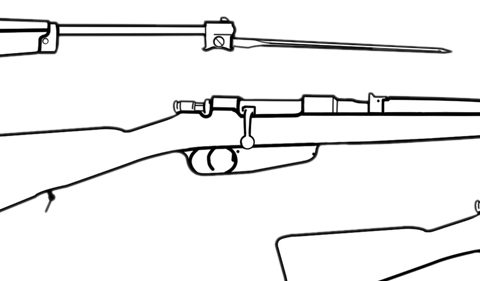
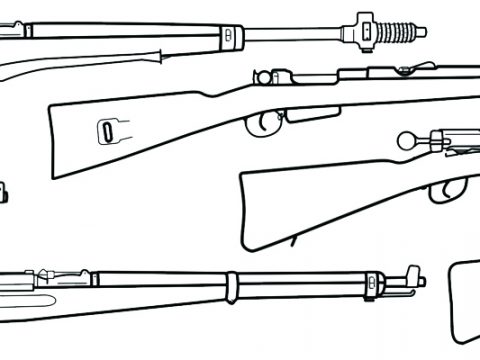
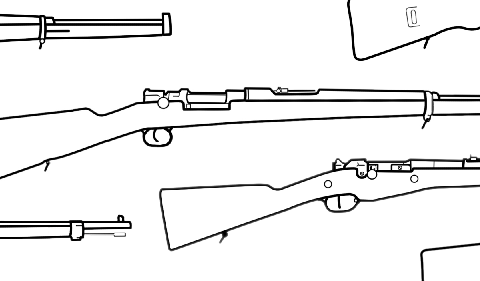
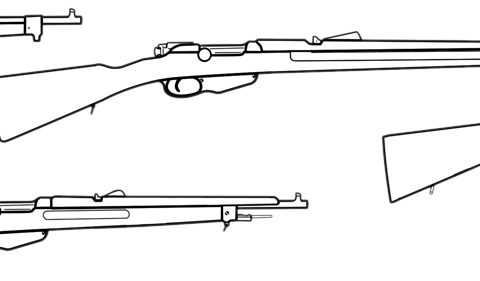
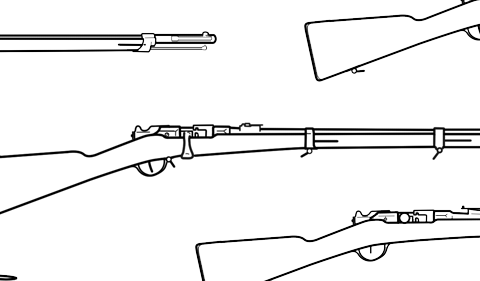
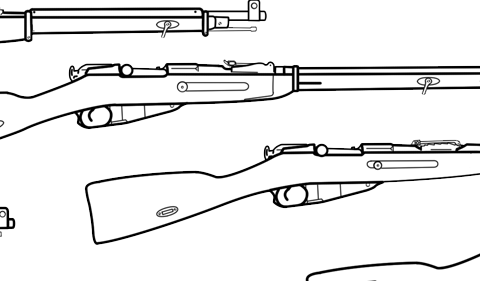
Awesome! I am very pleased you covered the Mannlicher rifles! I finally cleared up some confusing facts. Thank you very much 🙂
I have an Austrian ( its said anyway) fron banmd with stacking rod and bottom bayonet lug ,but screw and rod are on the RIGHT SIDE ,not the left . loks just like an 1890 or m95 centered on right side ,not on the bottom ,what is this one for or an anomaly m95 band ,my question today .
thank you
some grammer errors sorry there .front band for mannlicher ,m95 type ,right side entry screw and right side stacking hook or rod ,ball has the slot too ,again its centered on right ,like a reversed m95 .ok thanks for nay ideas
How strange, I can’t find any other examples. Could you photograph it and send it over to our email account?
Maybe you can answer some of my question on an 1895 steyr manlicher carbine. It looks like the 1895 carbine with stutzen lug. Has both side and lower sling points. Front sight in attached to the barrel. All small parts and stock are numbered 1862Y. The top of the rifle barrel says STEYR and has 1862Y stamped on the side of it.. No crests or other markings. The bolt has no etching. Will not chamber 8 x 56r ammunition. Bolt won’t go all the way into the chamber. Can you tell me where it was manufactured and I suspect it is chambered in 8 x 50r. Is it worth keeping ?
Sincerely,
Philip DeMattia
You seem to disregard the Mannlicher-Schönauer M1903/14 the main service gun for the Greek military in two Balkan wars, WWI, the Greco-Turkish war of 1919-1922, and WWII.
I know that Greece entered very late in the Great War (June 1917) but she saw action on the Salonika Front, and the rifle was in service for a long-long time (38 years!)
We had one on the wall for the whole video, but it is not a straight pull so we do not have it in this article. The Austro-Hungarians did use the MS and Md.1893 rifles but we’ll get to those when we get to Greece and Romania.
I have a budapest m95 stutzen w short sight but this rifle has a hooded front sight (winged style) any help
It is an s marked barrel as well
Could be a Czech or Hungarian piece. Snap a picture and send take it to Gunboards
Just to add a compliment to the author for having a very informative website. Apparently, for the most part, most enthusiasts possess incomplete information on the Steyr-Mannlicher series as given evidence by incorrect notions, model confusions, on the gun boards (like invention of the 95-34 model, calling the 95-30/1 a ‘stutzen’ carbine). I stood to learn a bit myself. I’ve had 4 of them for a number of years but am only recently beginning to appreciate them.
Great guide! Do you have information when the model Stutzen-Carbine Model 1895 was introduced? In addition I managed to find two variants of Stutzen-Carbine Model 1895: the rear band have either solid side sling attachement or the one presented here. Could you help me with that one?
In your 88/90 you mentioned the Siamese ones. Here is a link to one that is for sale which I believe is a Siamese rifle.
Sorry forgot to add the website on the original post. https://www.collectorssource.com/steyr-mannlicher-model-88-90-rifle.html
So an original carbine that was not cut down during the conversion to M95/30 would still have a front sight that’s banned to the barrel instead of one that is directly mounted/afixed?
I cant seem to find the Stock and related hardware for My still original m90 down at walmart unfortunately…. Was very impressed to see the one hanging on your wall.
I have had one that came out of a barn about 40 years ago, with the stock broken off behind the receiver and no hardware up front. I bet correct parts are not going to be found anywhere for such a critter? The m95 stock works with a little fitting, but where to find the metal bits….